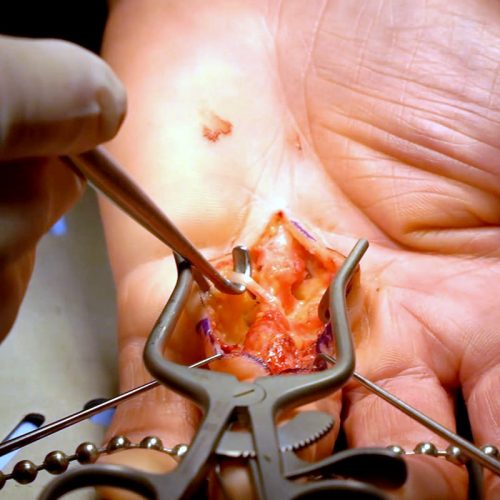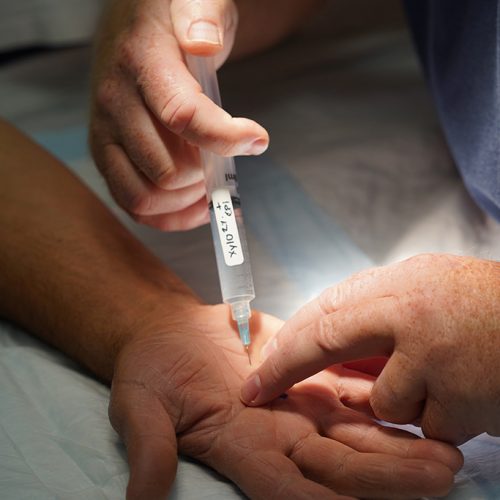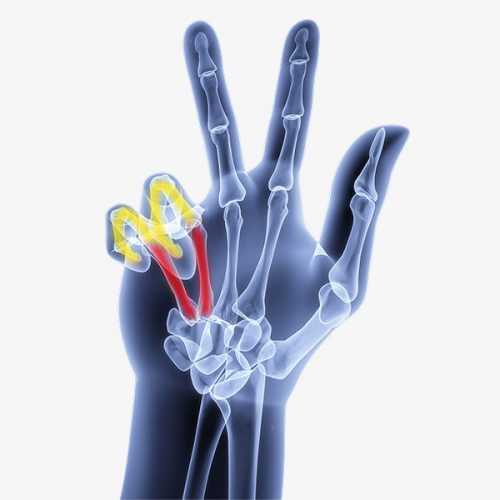

Dupuytren's Disease



WHAT IS DUPUYTREN’S DISEASE?
Dupuytren’s disease is a condition that affects the fascia—the fibrous layer of tissue that lies underneath the skin in the palm and fingers. In patients with Dupuytren’s, the fascia thickens, then tightens over time. This causes the fingers to be pulled inward, towards the palm, resulting in what is known as a “Dupuytren’s contracture.”
In some patients, a worsening Dupuytren’s contracture can interfere with hand function, making it difficult for them to perform their daily activities. When this occurs, there are nonsurgical and surgical treatment options available to help slow the progression of the disease and improve motion in the affected fingers.
SYMPTOMS OF DUPUYTREN’S DISEASE
A Dupuytren’s contracture typically progresses very slowly, over a period of years. Signs and symptoms of the condition may include:
- Nodules. You may develop one or more small lumps, or nodules, in the palm of your hand. These nodules are typically fixed to the overlying skin. Initially, the nodules may feel tender but, over time, this tenderness usually goes away. In some cases, there can be “pitting” or deep indentation of the skin near the nodules.
- Cords. The nodules may thicken and contract, contributing to the formation of dense and tough cords of tissue under the skin. These cords can restrict or tether the fingers and thumb from straightening or from spreading apart.
- Contractures. As the tissue under the skin tightens, one or more of your fingers may be pulled toward your palm and may be restricted from spreading apart. The ring and little fingers are most commonly affected, but any or all of the fingers can be involved, even the thumb. Most commonly, the first joint (knuckle joint) of the finger is affected, but the other joints may also be involved.
As the bend in your finger increases, it may be hard to straighten it fully. It may be difficult to grasp large objects, put your hand in your pocket, or perform other simple activities.
Some patients with Dupuytren’s disease may develop thickened tissue on the feet (Ledderhose disease) or penis (Peyronie’s disease). Symptoms do not occur anywhere else on the body.
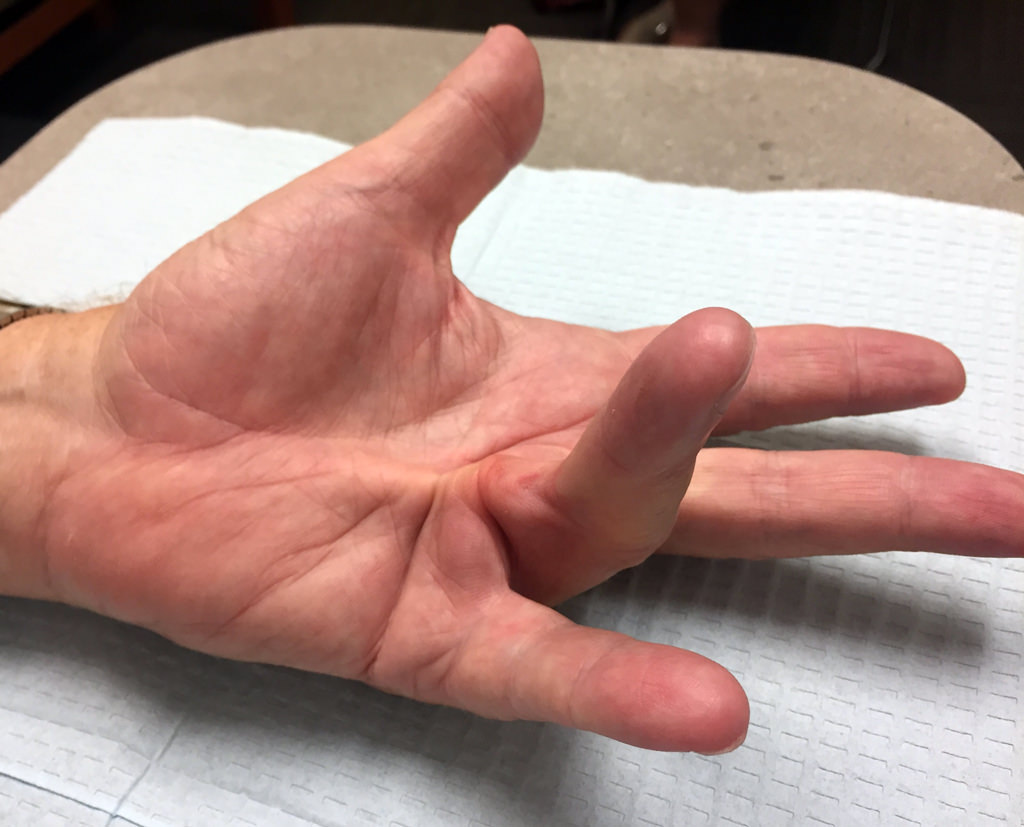
IF YOU ARE SUFFERING FROM SYMPTOMS OF DUPUYTREN’S DISEASE AND EVALUATING YOUR TREATMENT OPTIONS, SCHEDULE A CONSULTATION WITH DR. DANIEL DURAND TODAY.
WHAT CAUSES DUPUYTREN’S DISEASE?
The cause of Dupuytren’s disease is not completely known, but most evidence points towards genetics as having the most important role.
Risk Factors
There are a number of factors that are believed to contribute to the development or worsening of Dupuytren’s disease. These include:
- Gender. Men are more likely to develop the condition than women.
- Ancestry. People of northern European (English, Irish, Scottish, French, and Dutch) and Scandinavian (Swedish, Norwegian, and Finnish) ancestry are more likely to develop the condition.
- Heredity. Dupuytren’s often runs in families.
- Certain medical conditions. People with diabetes and seizure disorders are more likely to have Dupuytren’s.
- Age. The incidence of the condition increases with age.
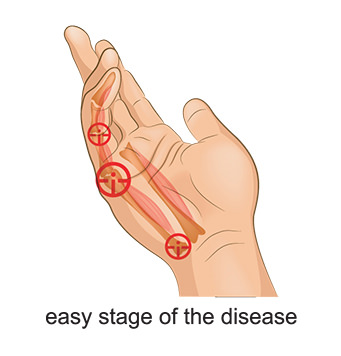
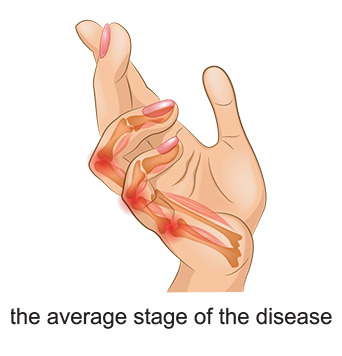
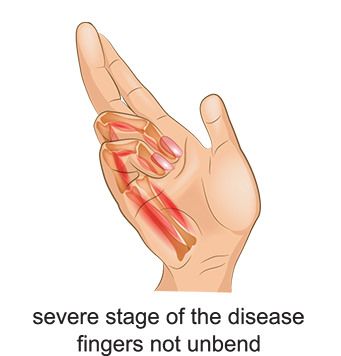
HOW IS DUPUYTREN’S DISEASE DIAGNOSED?
Dr. Durand will talk with you about your general health and medical history and ask about your symptoms. Because Dupuytren’s can run in families, he may ask if you are aware of any relatives that have the disease.
Dr. Durand will then carefully examine your fingers and hand. During the exam, he will:
- Record the location of nodules and cords on your palm.
- Measure the range of motion of your fingers and thumb.
- Test the feeling in your fingers and thumb.
- In some cases, document the appearance of your hand with clinical photographs.
These measurements will be compared with other measurements taken throughout your treatment to determine whether the condition is progressing over time.
WHEN SEEKING A DIAGNOSIS OR TREATMENT, IT’S BETTER TO SEE A DOCTOR SOONER RATHER THAN LATER. ONCE A CONDITION IS SEVERE, THE DISEASES ARE MORE DIFFICULT TO CORRECT.
EARLY INTERVENTION IS KEY TO AVOIDING PERMANENT DAMAGE. DEPENDING ON YOUR DIAGNOSIS, NONSURGICAL TREATMENT MAY BE AN OPTION.
HOW IS DUPUYTREN’S DISEASE TREATED?
Treatment involves removing or breaking apart the cords that are pulling your fingers toward your palm. This can be done in several ways. The choice of procedure depends on the severity of your symptoms and other health problems you may have.
For a long time, treatment for Dupuytren’s Disease was limited to surgery. In recent years, however, new treatments have become available. Dr. Durand works with patients to identify the best course for their particular health and lifestyle.
- Enzyme Injection
- Removal of the diseased tissue. Also called aponeurectomy
- Percutaneous Needle Aponeurotomy
HAND CARE WITH DR DANIEL DURAND
NOT ALL HAND AND WRIST CONDITIONS REQUIRE SURGICAL SOLUTIONS. OTHER TREATMENT OPTIONS ARE AVAILABLE FOR LESS SEVERE ISSUES. IF YOU’VE BEEN EXPERIENCING DUPUYTREN’S DISEASE SYMPTOMS, SCHEDULE AN APPOINTMENT WITH DR. DANIEL DURAND TODAY!


